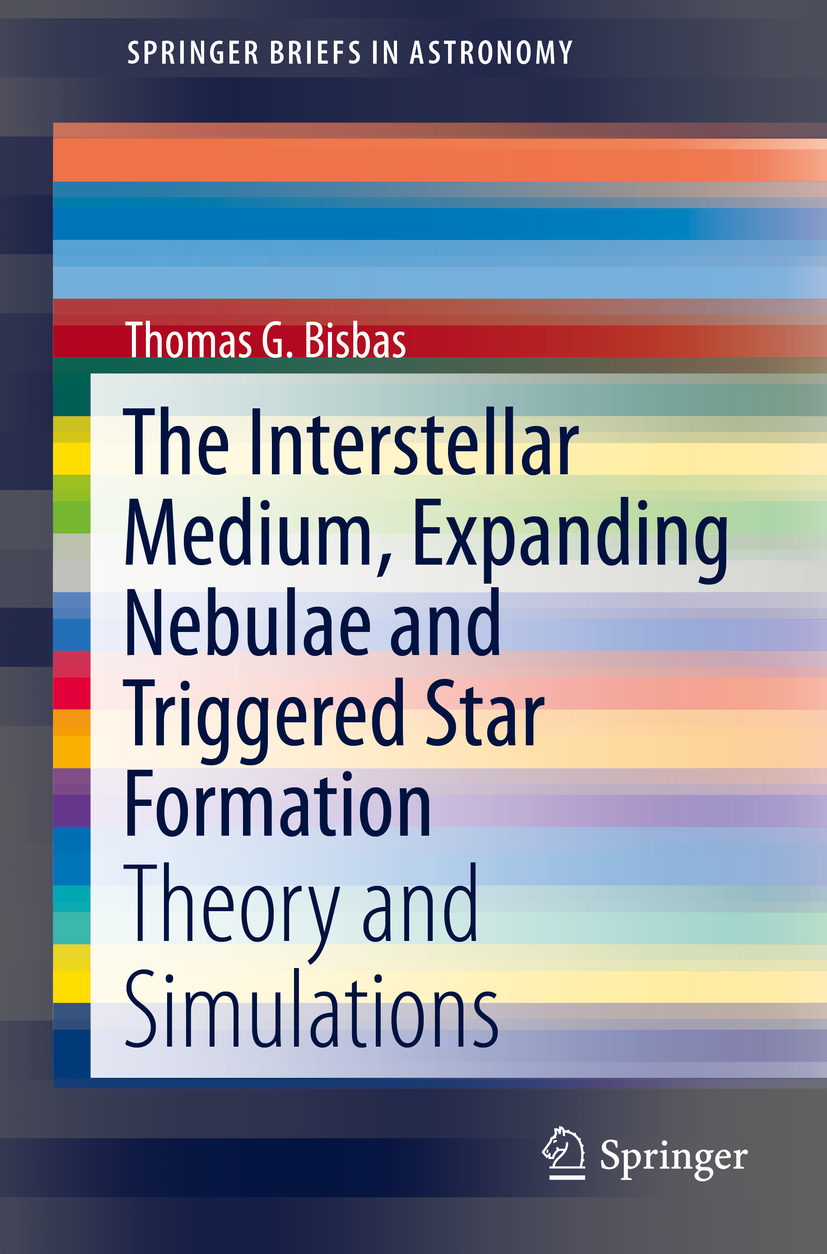I have written the book “The Interstellar Medium, Expanding Nebulae and Triggered Star Formation; theory and simulations”, published by Springer (Springer Briefs in Astronomy).
The book brings together the theoretical aspects of star formation and ionized regions with the most up-to-date simulations and observations. Beginning with the basic theory of star formation, the physics of expanding HII regions are reviewed in detail and a discussion on how a massive star can give birth to tens or hundreds of other stars follows. The theoretical description of star formation is shown in simplified and state-of-the-art numerical simulations, describing in a more clear way how feedback from massive stars can trigger star and planet formation. This is also combined with spectacular images of nebulae taken by talented amateur astronomers. The latter is very likely to stimulate the reader to observe the structure of nebulae from a different point of view, and to better understand the associated star formation therein.
Click here to download my PhD Thesis (2009, Cardiff University)
Title: Smoothed Particle Hydrodynamics simulations of expanding HII regions
Abstract: This thesis deals with numerical simulations of expanding ionized regions, known as HII regions. We implement a new three dimensional algorithm in Smoothed Particle Hydrodynamics for including the dynamical effects of the interaction between ionizing radiation and the interstellar medium. This interaction plays a crucial role in star formation at all epochs. We study the influence of ionizing radiation in spherically symmetric clouds. In particular, we study the spherically symmetric expansion of an HII region inside a uniform-density, non-self-gravitating cloud. We examine the ability of our algorithm to reproduce the known theoretical solution and we find that the agreement is very good. We also study the spherically symmetric expansion inside a uniform-density, self-gravitating cloud. We propose a new differential equation of motion for the expanding shell that includes the effects of gravity. Comparing its numerical solution with the simulations, we find that the equation predicts the position of the shell accurately. We also study the expansion of an off-centre HII region inside a uniform-density, non- self-gravitating cloud. This results in an evolution known as the rocket effect, where the ionizing radiation pushes and accelerates the cloud away from the exciting star leading to its dispersal. During this evolution, cometary knots appear as a result of Rayleigh-Taylor and Vishniac instabilities. The knots are composed of a dense head with a conic tail behind them, a structure that points towards the ionizing source. Our simulations show that these knots are very reminiscent of the observed structures in planetary nebula, such as in the Helix nebula. The last part of this thesis is dedicated to the study of cores ionized by an exciting source which is placed outside and far away from them. The evolution of these cores is known as radiation driven compression (or implosion). We perform simulations and compare our findings with results of other workers and we find that they agree very well. Using stable Bonnor-Ebert spheres, we extend our study to modelling triggered star formation within these cores as they are overrun and compressed by the incident ionizing flux. We construct a parameter space diagram and we map regions where star formation is expected to be observed. All the above results indicate that the algorithm presented in this thesis works well for treating the propagation of ionizing radiation. This new algorithm provides the means to explore and evaluate the role of ionizing radiation in regulating the efficiency and statistics of star formation.
